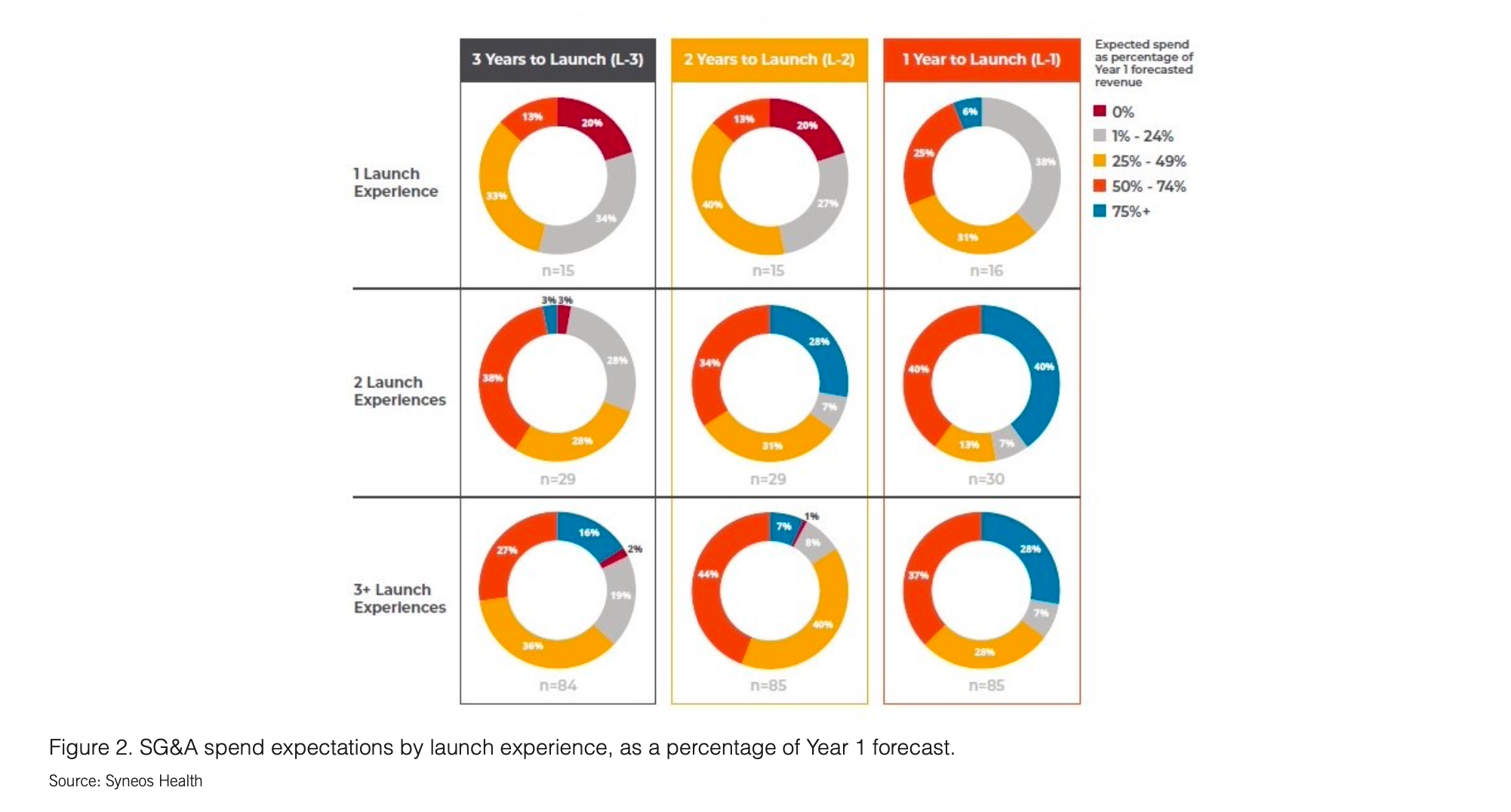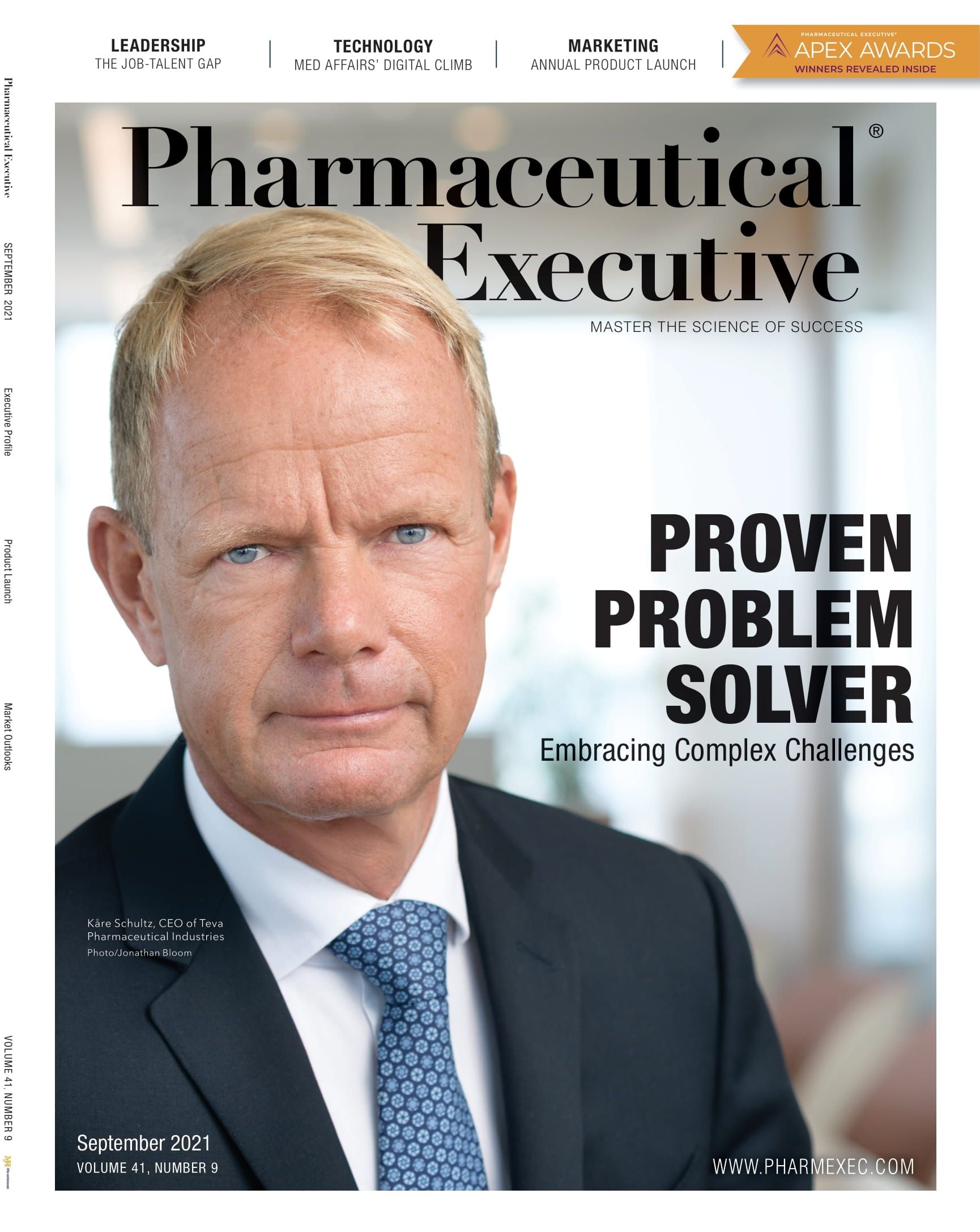Investing for Success: Finding the Right Launch Balance
Challenge assumptions and reset expectations when it comes to pre-launch SG&A investment to increase the odds of commercial success.

Companies decide how much to spend for launch based on many factors, including their expectations for the product and where it fits in the overall corporate strategy. It is common, though, for companies to wait to increase their spending until the year before launch. This is especially true for emerging companies that tend to be resource-constrained and risk-averse until they are certain that launch is imminent. The problem with this wait-and-see approach is that many clinical-stage companies find themselves either underfunding launches and underperforming in the market, or overfunding launches too late in the launch period in an attempt to catch up, thus incurring costs that do not add incremental value to commercial success.
Syneos Health conducted a survey and executive roundtable of more than 300 industry leaders across biopharma, finance, and advisory executives in small-to-midsized companies to better understand their experiences in launch investment strategy, including launch forecasting; breakeven expectations; timing, levels and drivers of launch and Selling, General & Administrative (SG&A) spend; and key areas of spend. We explored potential reasons why executives tend to underspend, how spend expectations differ by role and experience and how companies can course correct.
Existing experience in SG&A launch spending
We previously published an in-depth analysis of pre-launch/launch-year SG&A spend in a sample of emerging companies launching their first product to understand the threshold of SG&A investment needed to increase the probability of a successful launch. As shown in Figure 1 below, the study found that companies that spent a minimum of 75% of their launch-year forecasted revenue in their pre-launch year (L-1) had higher rates of launch success as defined by achieving analyst consensus forecast.

Not a single company that spent less than 75% of their launch year forecasted revenue in L-1 achieved a successful launch. Excessive overspending didn’t necessarily help either. Less than half (40%) of the companies that spent more than 250% of their launch-year forecasted revenue in L-1 failed to achieve their forecasted revenue potential. The study revealed an L-1 launch spend “sweet spot” in the 75% to 250% range. While companies frequently underspend, investors and advisory professionals who guide biopharma executives on these exact SG&A decisions consider higher levels of spend more appropriate.
- Underspending is the norm, but finance/advisory professionals expect more. Company executives are more conservative in their spend expectations than are financial/advisory professionals.
- Three years prior to launch, a little more than one-third (38%) of the biopharmaceutical executives expect to spend greater than 50% of projected launch-year revenues, compared to more than two-thirds (68%) of finance and advisory professionals—a 30% gap between the two groups.
- Two years prior to launch, slightly more biopharmaceutical executives (49%) expect SG&A spend at the greater than 50% level, compared to three years prior to launch. The finance and advisory professionals spend at L-2 stays roughly the same (67%), which reduces the gap slightly between the two groups (compared to L-3) but remains significant—in this case, 18%.
This difference may be due to an inclination on the part of biopharmaceutical executives to hedge development risk by tying spending to expected development and financial milestones, such as clinical program progression, fundraising and partnering agreements, and regulatory filing acceptance/ approval. Stage-gating is an industrywide practice, and a high proportion of biopharmaceutical executives in our survey (78%) indicated they have delayed launch spend due to a stage-gating strategy. However, it can be challenging to “catch up” in spending after milestones are met, potentially resulting in an inefficient use of resources and a shorter planning window available around launch. The runway from investment to approval might be as short as six months, leaving little time to sufficiently lay the groundwork and prepare the market for product entry and market access, especially for more innovative or potentially practice-changing therapies.
Executives may have low pre-launch spend expectations for other reasons, too—for example, if they perceive there will be difficulty making the business case for investment; if they experience challenges in their ability to demonstrate cash management abilities to the company’s board and investors; or if they have other priorities given their assessment of product potential or its place in their overall corporate strategy.
More launch experience associated with higher spend expectations
We also assessed to what degree biopharmaceutical executives’ pre-launch spend expectations might be influenced by their previous launch experience. As shown in Figure 2 below, we found those who had launched at least three products are not only willing to spend more each year pre-launch than their less experienced counterparts, but also tend to invest more appropriately. Specifically:
- Launch Experience: Executives with experience launching just one product do not expect to spend enough to meet the >75% threshold in L-3 and L-2 prior to launch; just 6% of them expect to spend sufficiently in L-1.
- Launch Experiences: Executives with two launch experiences expect to spend more, but less than still is optimal because they are not starting to spend sufficiently until L-2.
- Launch Experiences: Executives with three launch experiences expect to spend more optimally by doing so earlier in L-3 as they begin engaging with and preparing the market, and they continue to invest through L-2 and L-1.

Course-correcting for optimal pre-launch investment
Our research suggests that it is wise to challenge assumptions and reset expectations when it comes to pre-launch SG&A investment, both with regard to the timing of certain activities and levels of investment needed to increase the odds of commercial success. Strategies include:
- Clearly define the opportunity and critical success factors: This is critical, and yet companies often lack the robust insights required to build a strong business case to use with investors. To address this, companies should look to gain a firm understanding of the market by conducting a scenario-based opportunity assessment, conducting it early and updating it as conditions change.
- Align launch investment with corporate strategy and product potential, earlier in the process: Have a good sense of market dynamics and product potential in order to make targeted investments to pull forward the strategy. Certain market-shaping activities, such as disease-state education and awareness programs, conducting appropriate and early primary and secondary market research with KOLs, HCPs, payers, and patients, as well as peer-to-peer programs, require a longer runway, and the efforts and investment can pay dividends at launch.
- Reassess pre-launch investments over time: Be prepared to challenge assumptions about what spending levels should be at key clinical, regulatory and financial milestones, backed by comprehensive market analysis and launch expertise.
- Explore synergistic partnerships: Teaming up with other organizations can help secure additional funding while offsetting any perceived development risks and supports the sharing of critical knowledge and resources. This could include partnerships with other companies in similar therapeutic areas with common interests.
- Surround yourself with launch experience and expertise: Build a team that is experienced in the market and has launch experience in a similar therapeutic area. Look outside the company for third-party perspectives and partners who can bring in best practices and case studies from other launches in order to avoid costly missteps early on.
- Invest more resources upfront in breaking down silos and integrating strategic planning across functions: Plan to integrate strategic imperatives across the various functions and key stakeholders in the market. Clearly identify how each activity can be mapped back to the strategic imperatives and outline the level of resourcing required to successfully complete those activities.
- Define the impact of delaying spend: It is critical to clarify the strategic choices the organization is making in delaying spend and what tradeoffs are taking place as a result. This will help identify priority areas for investment and create transparency if the product does not capture full value.
- Schedule formal check-ins with your executive team and Board: Having formal check-ins to review the spending strategy can help identify potential reasons for deviation, such as changes in the competitive and market access landscape or new market research insights, and support investment to take corrective action.
Conclusion
Risk is inherent to the business of drug discovery, and clinical-stage companies launching their first product have an acute awareness of this fact. This, in part, helps explain why many companies either underfund launches while hedging bets on their product’s potential, or attempt to play catch-up too late in the game and end up incurring unnecessary costs that add little incremental value. Keeping the above strategies in mind—which will involve thoughtfully challenging a few assumptions about pre-launch SG&A spend along the way—can help emerging, clinical-stage companies spend more appropriately and strategically, thus increasing their potential for launch success.
Naveen Murthy, Senior Managing Director, Head of Product and Franchise Strategy, Sachin Purwa, Michael Sarshad, Directors, Scott Coons, Launch Manager, all with Commercial Advisory Group, Syneos Health Consulting

The Misinformation Maze: Navigating Public Health in the Digital Age
March 11th 2025Jennifer Butler, chief commercial officer of Pleio, discusses misinformation's threat to public health, where patients are turning for trustworthy health information, the industry's pivot to peer-to-patient strategies to educate patients, and more.
Navigating Distrust: Pharma in the Age of Social Media
February 18th 2025Ian Baer, Founder and CEO of Sooth, discusses how the growing distrust in social media will impact industry marketing strategies and the relationships between pharmaceutical companies and the patients they aim to serve. He also explains dark social, how to combat misinformation, closing the trust gap, and more.

.png&w=3840&q=75)

.png&w=3840&q=75)



.png&w=3840&q=75)



.png&w=3840&q=75)
























